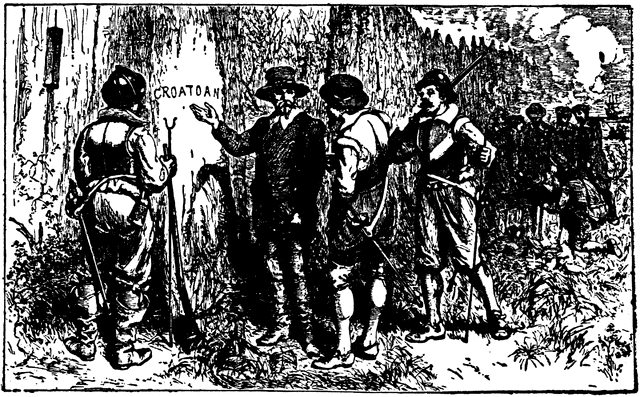The Lost Colony of Roanoke
November 23, 2021
Thanksgiving is all about giving thanks, and we owe one big thanks to the pilgrims who first started settlements in North America in search of freedom for future generations. To no one’s surprise, starting a life in pre-civilization North America was not easy, and the colony Roanoke is a prime example.
Roanoke is known for being England’s first effort to colonize “The New World” and also for being the oldest unsolved American mystery. In the year 1578, 115 English settlers made a home on an island off the east coast. Facing material and help shortages, Governor John White decided to voyage back to England to replenish the colony’s supplies and up the manpower. No one could have guessed that was the last time White would ever see those 115 men, women, and children. When White finally made it to Europe, he was surprised to learn of the sour relations between Spain and England. As a result, the war caused Queen Elizabeth I to command that all ships be used to fight Spain, including White’s ship. It would not be until three years later that White finally got all of the supplies he needed and arrived back at Roanoke.
This is where the mystery part comes into play. Upon arrival to what was once Roanoke, the settlement he had left three years prior, White failed to discover any remnants of previous inhabitants; all signs of the colony had seemingly disappeared, along with his wife, daughter, and granddaughter whom he left behind. The only clue that White and his crewmates discovered was the word “Croatoan” carved into a tree. Croatoan was a Native American group located just 50 miles south of Roanoke on a neighboring island. In an effort to find the colony, White and his crewmates attempted to sail to Croatoan three separate times; unfortunately, during each attempt, they were met with a storm that forced them to turn the ship around. Consequently, White was never able to reach Croatoan and ended up returning back to Europe. To this day, there is no evidence of what happened to Roanoke.
For over one hundred people to go missing is quite alarming and has led to the speculation of myriad theories. Some believe that the colony was attacked and looted by the Roanoke Native American tribe that inhabited the island long before the colonists, and this Roanoke Native American tribe either killed or abducted the people of Roanoke. The colonists and Natives were friendly for a period of time until relations turned hostile due to food shortages; this led to the killing of Chief Wingina. Another speculation is that the colonists left the Island for Croatoan in search of more resources and allied with a Native American tribe. Professor Mark Horton, who studies the ancient colony, suggests that “massive political eruption and disagreements and people walking out and things” could be the reason for the settlers to leave. The colonists could have also thought that with Governor John White’s three-year extended absence he was not coming back with supplies, leaving the settlers to sail back to Europe themselves and possibly getting lost on their way… or perhaps caught in a storm at sea.
Though any one of these plethoras of theories could have been what actually happened, The Lost Colony of Roanoke remains one of the most notorious mysteries in American history.


